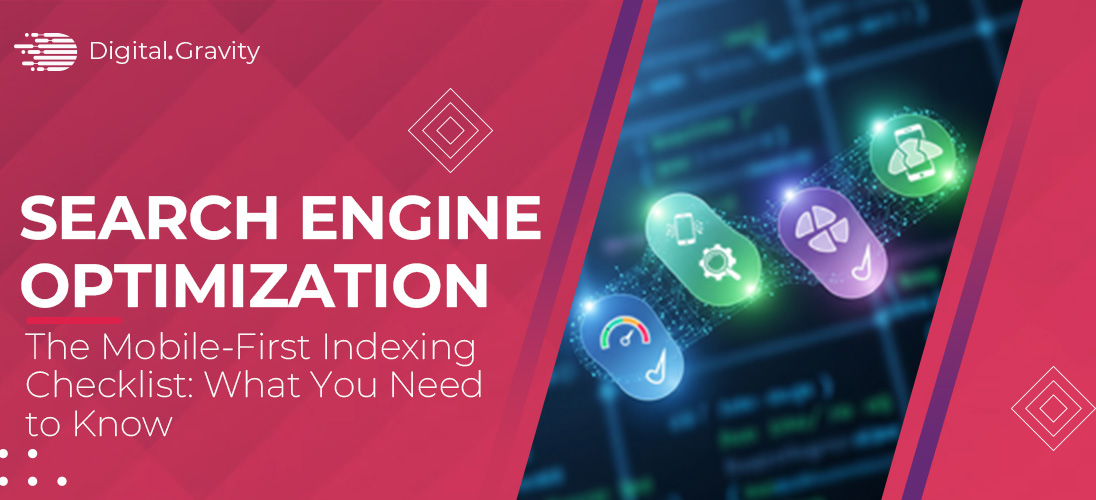The mobile age is here but it is not a temporary trend. More than 60 percent of all searches made on Google are done using mobile devices. Consequently, Google has now switched to mobile-first indexing, which is a tremendous change, as it makes the mobile version of your site the primary one in terms of ranking and indexing your content.
In case your mobile site is old, not working, or built incorrectly, all your SEO efforts are in danger, even though your desktop site is perfect. However, it is not merely a technical list. Mobile-first success refers to performing faster, easier to use, organized, and content delivery than other competitors.
This mobile-friendly guide is a blend of what Google suggests, what professionals suggest, and emerging trends that are set to take off in the near future, which will provide you with all the tools necessary to optimize your mobile presence and secure your rankings. We will also demonstrate how we can help you to make your mobile experience more visible and convert more with Digital Gravity KSA along the way.
What Is Mobile-First Indexing and Why It Is Important?
Mobile-first indexing implies that Google no longer considers your desktop site as the primary source of content, based on which it crawls, indexes, and ranks your site. This is the way the world is utilizing the internet nowadays: quick, mobile-first, and on-the-go.
This shift did not occur overnight. Mobile-first indexing was experimented on by Google as early as 2016. By October 2023, it was the default indexing system of all websites. This implies that when your mobile site is lacking essential content, poorly designed, or slow to load- Google will punish your rankings on all devices.
Are you not sure whether your mobile site is up to the standards of Google? Enquire about a free SEO audit on mobile with Digital Gravity KSA today.
Why is the Googlebot Smartphone the New King?
Google crawls two primary crawlers:
- Googlebot Smartphone (the main mobile crawler)
- Googlebot Desktop (legacy indexing)
All new websites are indexed with Googlebot Smartphone since March 2021. This crawler pretends to be a mobile user and tests the mobile friendliness of your site. When your site loads slowly, conceals content, or utilizes broken redirects, be ready to have severe visibility problems.
The typical problems identified by Googlebot Smartphone:
- 404 errors that are mobile-only
- Robots.txt blocked resources (CSS, JS, images)
- Bad mobile UX (e.g. pop-ups)
- Structured data that is inconsistent
- Slow page speeds
The 5 Pillars of Mobile-First SEO Success
To make sense of how these pillars interact to increase mobile visibility, performance and user experience, we can look at each of them individually.
1. Responsive Web Design on All Pages
The best recommendation by Google is responsive design. It uses the same HTML code on all devices and changes the layout depending on the screen size. Responsive design is simpler to manage and scale than separate mobile URLs (m-dot) or dynamic serving.
Advantages of responsive design:
- Quicker installing and servicing
- Consistent experience on devices
- Improved crawlability
- Improved SEO and reduced mistakes
Do you need assistance with redesigning your mobile experience? Allow Digital Gravity KSA to create your responsive web-site optimized to rank well.
2. Mobile and Desktop Parity of Content
Content parity implies that the mobile and desktop versions of your site must display the same meaningful content. Google was explicit: when your mobile version has less content, fewer internal links, or lacks structured data, the whole site can be penalized.
Best practices:
- Put all major content (text, CTAs, videos, structured data) on mobile
- Improve readability by using accordions or tabs- Google still crawls this text
- Maintain headers, metadata and links
- Avoid mobile pages that redirect all traffic to home page
Not sure whether your mobile content is aligned? We at Digital Gravity KSA will be able to audit and repair content parity problems within a short time.
3. Technical Optimization: Crawling, indexing and speed
The clean technical set up is the driver behind every high ranking mobile site. Whether it is robots.txt or structured data, every line of code matters.
Technical to-dos:
- Apply identical robots meta tags to both versions (do not use no-index on mobile!)
- Do not block important resources such as CSS, JavaScript, or images
- Make sure that Google can render lazy-loaded content without user interaction
- Apply proper viewport configuration (<meta name=”viewport” content=”width=device-width, initial-scale=1″>)
- Apply proper canonical and alternate tags on m-dot sites
- Add structured data (e.g., Breadcrumb, Product, VideoObject) on mobile and desktop versions
4. Mobile Image and Media Optimization
The quality of images is important, but only in case they are quickly loaded and correctly formatted.
Best practices of images:
- Next-gen formats such as WebP and SVG
- Maintain image URLs on desktop and mobile
- Include alt text on every image to make them accessible and search engine friendly
- Make sure that size, resolution and compression are adequate
Video optimization:
- Supported formats and tags (<video>, <embed>, <object>)
- Place videos above-the-fold whenever possible
- Unify match video structured data across devices
- Avoid dynamic video URLs which varies with each load
Media-heavy website? We can help you to make it faster and rank well without compromising quality.
5. Performance & Core Web Vitals
Core Web Vitals are performance indicators by Google that directly impact mobile search ranking. By optimizing these, you make your mobile experience faster and more pleasant-not only to a human but also to a bot.
Mobile SEO target metrics:
| Metric | Target |
| Largest Contentful Paint | ≤ 2.5 seconds |
| Interaction to Next Paint | ≤ 200 ms |
| Cumulative Layout Shift | ≤ 0.1 |
Applications such as Google PageSpeed Insights and the Core Web Vitals report in Search Console can be used to present actionable data to improve upon.
Testing Your Mobile-Firstness
To verify:
- In case your pages are indexed
- In case of Googlebot Smartphone is employed
- In case of structured data and mobile usability acceptance tests
In addition, visit Settings > Indexing Crawler in Search Console to confirm your indexing method across the world.
Mobile SEO Monitoring Free Tools
Use these tools frequently to keep in the lead:
- Google PageSpeed Insights Core Web Vitals and mobile performance
- Structured data validation Rich Results Test
- Chrome DevTools Responsive layout and debugging speed
Continuous Mobile SEO Optimisation
Mobile optimization is not a one-off. A regular audit and improvement plan is what you require to remain compliant with Google standards that keep changing.
Recommended schedule:
- Weekly: Google Search Console mobile usability review
- Monthly: Monitor Core Web Vitals, and image/video speed
- Quarterly: Conduct structured data, crawlability, and rendering audits
Too busy to run audits? We will take care of monitoring and reporting of mobile SEO. Let’s talk.
What’s Next? Voice, PWAs, and AI-Driven Mobile Search
Moving forward, there are various trends that will determine the direction that mobile-first indexing takes:
- Voice search optimization: Answer boxes, FAQs, and conversational content are essential
- Progressive Web Apps (PWAs): App-like experiences that load faster
- AI-enhanced search (Google MUM): Contextual ranking, including images and video
Mobile-only paths to purchase Design based on the assumption that some users will never see your desktop site
Feel like building towards the future of search? Future-proof your mobile SEO by letting Digital Gravity KSA do it with innovative technologies such as PWAs and voice-friendly content.
Conclusion
Mobile-first indexing is not a fad, it is the new search basis. When your site performs poorly on mobile, you are not seen by more than 50 percent of the internet. No matter whether you are creating a completely new site or updating an old one, you must have a mobile-first approach to everything: content, design, speed, structure, and monitoring. Discuss with the mobile SEO specialists at Digital Gravity KSA and open higher positions, quicker loading, and improved conversions now.
FAQs
Is mobile-first indexing mobile-friendly design?
No. Google indexes your site using mobile-first indexing (based on the mobile version of your site), and mobile-friendly design is the quality of the mobile experience you provide on your site.
My readers access via desktop, do I need to be optimized for mobile?
Yes. Google indexes your site on the basis of the mobile version irrespective of the device used by your audience.
What is the way to see whether my site is included in mobile-first indexing?
Go to Google Search Console settings and check the indexing crawler is Googlebot Smartphone.
Will my rankings suffer because of different content on mobile and desktop?
Yes. Google will index only what is on your mobile site. Lost content or metadata will impact your SEO.
So, what comes after mobile-first indexing?
The new priorities of Google are: Core Web Vitals, optimization of voice search, structured data, and lightweight, app-like mobile experiences (PWAs).








